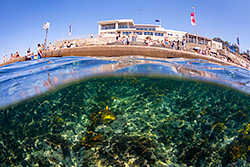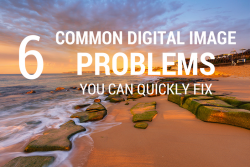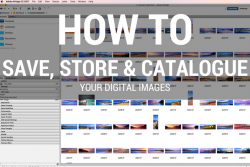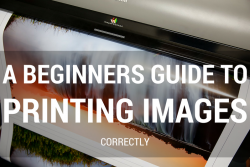Last week I took the family to Hunter Valley Gardens (not Duff gardens) and we walked through the Ken Duncan’s Gallery that he has up there. While looking around I saw some mounted 11 inch panoramics selling for $99 and 18 inch mounted panoramic’s selling for $199 each. All where limited editions of 2000 and it got me thinking about the difference between limited edition and open edition and the ways in which limited editions are done and thought it would make for an interesting blog post.
Now before I go any further please note that this article is my own opinion and I will make general speculations. I have used well know landscape photographers Ken Duncan and Peter Lik as examples as people know and respect their work and they have a proven track record of being very successful in this industry. So if for some reason you take what I say to heart please be mature in any post you care to give, unlike some in the past.
Anyway now that for formalities are out of the way … for starters I personally don’t do limited edition images. I have considered it, even to the point that I have put some images aside to be limited editions but I just don’t see myself taking that route at this time. Purely as a personal choice. I have lost sales in the past from people who have called me asking if I offer any limited editions. When I inform them that I don’t, they have taken their business else where.
When you decide to do limited editions from my experience of seeing how other photographers do it there are many roads. Some are a bit questionable but all with one goal. To sell your work at an increased price to open editions, that will gradually increase as the edition number closes with a sales pitch that when the edition closes the price of the work will be of greater value and that you are buying an asset. Before I touch more on that topic here are some ways I have seen limited editions sold.
1. Edition print runs offered 30 inch and higher ranging from 50 to 300 in an edition. This is the method used by Ken Duncan and most who sell Limited Edition.
2. Edition print runs offered 30 inch and higher but numbers are limited to around 300 but also limited in the size offered as well. So there might only be 50 prints offered in the 30 inch size, 100 in 40 inch etc. This is a method that I have seen Peter Lik do. Not 100% sure if that is the case still.
3. Another one I have seen is edition print runs over 30 inch of an image in numbers of around 300. But the photo is also an open edition if purchased in sizes under 30 inch. I disagree with this method. A photo is either limited edition or it’s not. I have only seen a few photographers do this.
4. The other one is limited editions of 1000, 2000 or higher sold at a lower price than editions of 300 but are also have a size capped and are not offered over 24 inch. This is another method by Ken Duncan. One could argue that 2000 copies of an image isn’t really limited edition but I guess you are paying less and still getting a great product from the photographers who’s work you admire.
With selling limited editions there is quite a sales pitch that comes with them of how the buyer will eventually own a photo that will be an investment, especially when the edition sells out. This is great if true, but in reality this is only going to be true if there is a market demand for your work when it sells out and at a higher price than what most paid for it and their is a precedence of your work selling at a given increased price point.
Now for example if you look at Ken Duncan’s Hot List of images on his website that are about to sell out. A 75 inch framed 3:1 panoramic is going to sell for $5900. Now if you take a look at the Hall of Fame – Resale prints the average price of a framed photo selling there is $7000. Now guessing that in the Hot List there are also 75 inch photo’s IF someone buys a Ken Duncan photo and decides to resell it later you could expect a minimum profit resale margin of $1100 (minus their commission for the resale). If you bought the photo earlier in the edition for a lower amount say $3400 for a 75 inch then your return will be greater but that is only a profit of $3600. Now this profit margin I would say is going to be dependent on what image is being re sold and I would guess that there are images with higher demand than others which will bring in a higher return on re sale and also it’s edition number too. This is also reflected in Ken’s hot list as some images are re selling for $22500. But someone has to buy it at that price for a precedence to be set.
Another example is you hear roomers on forums that Peter Lik will sell a framed panoramic image for $40,000 US and his sales people telling buyers that when the edition sells out it will be worth double the amount (no wonder he turns over 30 million a year) . This would only be true if someone is willing to pay $80,000 for the closed edition image. Now if there is proof that his sold out editions sell for double, then and you could honestly say this to buyers who have been happy to pay double for his closed editions. Other than that this would be salesman Bull S*$t to get the sale and I would ask for proof of resale at the higher amount as promoted.
So the profit (or acquiring of an asset) to be made to investors in buying anyone’s Limited Edition is only real if there are proven re sales to back it up. Not sure if you could list owning someones limited edition photo as an asset on your home loan application. But there are people (I would guess most) who don’t give a rats about the re sale value of the photo, they just love it for what it is and enjoy the knowledge that not everyone will be able to buy one and that the photo itself is limited.
Selling Limited and Open editions is a personal choice and main stream veterans like Ken Duncan and Peter Lik show the best way to do it and their model obviously works very well.













Interesting thoughts, Matt.
I relation to limited edition prints I want to share two quite interesting (but different) articles: The Numbering Affair by Alain Briot and What Size is the Edition by Brooks Jensen.
IIya,
Both of these were excellent articles. Thanks much for referring them. I’m trying to sort out my strategy, I like what both authors have to say. However neither addressed the hesitancy of collectors, who may be anxious to open their wallet wide without a limit on an edition. I can see them thinking” What if this guy’s stuff takes off? I don’t want to have what every Tom, Dick and Harry has – I want unique, special work”….. Thanks, Tom
nice read that!
i havent gone down the whole limited edition path either… simply cause i dont sell enough! lol
While i was in peter liks gallery i made it abvious from the get go that i was not in the amrket to purchase anything and i ended up talking with the bloke for 30 or 40 mins. He says they do sell quite a lot and some were going for closer to $100,000!
Dylan, it could be a marketing trick. LOL
But if it’s true then I think it was bought by a company and close to the end of a financial year. 🙂
The share market trades on hype, Peter Lik has made use of this concept and used it as a sales pitch that works a treat for americans that soak it up haha.
Good article though Matt. If the average hack with a .com is selling there shots as limited editions then all they are really doing is trying to scam the buyer into paying more money. Only well known photographers prints would ever have a shot at making you money in the long term.
Interesting read mate, think that you can sell as limited edition if you are well known established brand
such as the two that you mentioned. It does help to get your stuff into galleries (if that is your thing) as there seems to be an extra perceived benefit to the consumers and gallery owners alike. I have thought about it but due to the forementioned point about established brand, not gone down that path but if I did the editions would be between 25-75.
There are photographers out there as good as Ken Duncan or Peter Lik but they don’t get their heads around the business/marketing side of photography. But for me a limited edition print would have a history, something like Max Dupains The Sunbaker.
I’m waiting to see if anyone takes limited edition to the next level, one print only and the negative/file is destroyed.
destroying the file is going a bit to far i think lol
Yea I dont see anything to gain from destroying it. If you were going to do limited edition of 1/1 I’d like to see the tranny framed in the shot. That would be cool.
Interesting read Matt, Don’t some photogs let you bring your limited edition print in and get it printed a different size if you want? and destroy the other copy?
I cant see why they wouldnt as you own the edition number not the size. Unlike Peter Lik you buy the number and the size. (He use to do that, not so sure now).
I think the limited edition idea is a good one. Maybe it is just marketing, but something about an image that can be reproduced indefinitely doesn’t inspire me to spend $1500 and stick it on my wall. That’s what magazines are for. There is a long tradition of limited edition prints in art stretching back hundreds of years. This doesn’t mean that the item becomes particularly valuable once the edition is sold out, it just means it is “serious” art rather than a postcard, poster or calendar.
I think limited edition is also a good idea, but the article is referring to the expected / fictitious increased value people put on limited edition when it sells out.
But I think putting open edition photos into the class of a magazine or poster is a bit far fetched considering those open editions are still printed on papers like FujiFlex just like the limited editions are. I a 75 inch wide shot on my wall that all up cost me about $1100 to have printed and framed the only thing separating it from the quality of a limited edition like Ken Duncans is I havent written 1/300 on it. The reason I can say it is the same quality is his lab printed and framed it. Certainly nothing magazine, poster or postcard about it.
Most people who offer limited edition images will also publish those shots in books, postcards and in magazines (not as stock images but possibly in an article about themselves etc). So where do you draw the line to say it is limited edition when you have paid an extra amount for it to be limited and someone has your shot in a book or on a postcard they just bought for $2. I have quite a number of landscape photographers books like Ken Duncan and Peter Lik and those books are littered with their limited edition work.
I would class something like the Mona Lisa as serious art. But I am sure you can buy a poster of it for your wall ?
Interesting read Matt – thanks for posting.
Although I think it would have been interesting to compare / contrast the use of limited edition prints for the Juggernaughts like Ken and Peter compared to other photographers. I found myself thinking over and over whilst reading the article that “these two guys are two of the most internationally recognised photographers – of course their images would hold value / increase in value”.
These guys have the goodwill / brand-awareness / market-presence for them to be able to do this. What I’d find interesting woul be to compare this to a lesser known photographer who sells limited edition prints.
For Peter / Ken it works, but only in my opinion, because they are Peter and Ken.
Tim… I think that a lesser known photographer would be lucky if they have come close to selling out an edition size to even know.
I think if you look at Kens stats and see that there really isnt much of a profit you could say for us lesser known photographers it is really down to people knowing that they have something that is limited than it being an investment.
You’ve raised a great debate Matt. Thanks for an interesting post. 🙂
If we take away the focus from the photographer for a moment and concentrate on the purchaser. I don’t believe that LEPs only work well for ‘famous’ photogaphers (as Tim mentioned) because it’s also about the buyer. I am constantly amazed at the amounts of money people spend on ‘stuff’. Some ladies (not me!) pay up to $1000 for a handbag and Jimmy Choo shoes (1 pair that will probably be wrecked within 12 months) cost a fortune….why? It’s all about ‘perceived’ value. Given a choice of 2 similar prints there are plenty of people who will buy the one that is Limited Edition because it is Limited Edition (regardless of who the photographer is) and, once it is hanging on their wall, they will take great pride in telling people this. Overinflated pricing just doesn’t matter to some people as long as they can have what they want even if they can’t actually afford it. Certainly with Peter Liks clientele, I’d say he probably is achieving those high resale prices….and even if he isn’t, it doesn’t matter becasue the perception is there. Just because it’s difficult for us to believe it’s possible doesn’t mean that it’s not….just means we’re not targeting the right people. Now….who wants to buy one of my prints for $80,000??
Ken Duncan has too many in his Limited Editions! They certainly are not “Limited” in his case.
Matt, what do you mean when you say: “Edition print runs offered 30 inch and higher” is that width & height combined? larger dimension only? Very good discussion.
Hi Tom, I am meaning print runs 30 inches and wider, like 40, 50, 60 and 75 inch wide.
Limiting, is just that. We need to limit our print to value our art numerically, when they should be valued on aesthetic properties. As soon as we assign the numbers, we are giving a finite value to a work. There are other ways of limiting an image apart from assigning a number. Think outside the box.
Okay so I’ve read all your comments and guess what? I’m STUCK with a “limited” edition Ken Duncan signed 2002 book number 533 and don’t know how to sell it when the market value (based on what the Ken duncan gallery has told me is $2,000). So where do I find these people that are willing to pay me just $500 to $700 for it???? I want it GONE…if anyone can help please!
Nowadays you can’t sell anything if it’s not a limited edition.. buyers seem to perceive limited as being the same as quality..even well known photographers struggle to sell
out limited editions. It’s easy to produce a limited edition but you still have to find a market and that is extremely costly. So, is the margin really there?